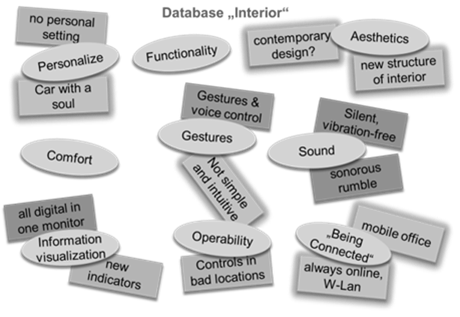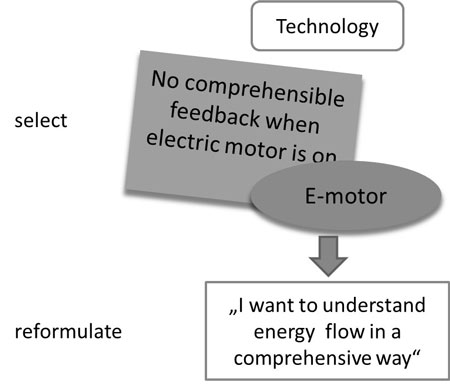Define Opportunities.
Identify opportunities and potentials for positive experiences.
Why.
Positive aspects of the situation as-is can serve as a starting point for creating positive experiences.
What.
Analyze, reflect and process the studies carried out during the design research in three steps to define possible development foci.
How.
Current status: goals, problems, motives and needs of the users.
In the first step, analyze the studies carried out during the design research and assign them to higher ranking categories, analog to a SWOT-analysis. The categories describe possible starting points for the new development and include: problems of existing technologies, new technologies, context factors and motives.
The positive aspects that can be used as starting points are very important for creating positive experiences. In a first step, discuss and select these opportunities and potentials (analog: "Strengths" and "Opportunities" of the SWOT-analysis).
In the last step, reformulate the contents of the selected categories, opportunities and potentials into a standard format, e.g. as "I ..." sentences, so they can be restructured in the next step into a clear framework.
Opportunities and potentials
Insights
Base the opportunities on solid, technically correct statements. In this early phase, pay attention to solution neutrality. Of particular importance is the role of the motive patterns as opportunities. The selected opportunities are very different; an order scheme is therefore important (structuring - framework).
References
Thompson, J. (1994). Strategic Management: Awareness and Change. London: Chapman and Hill
Lindemann, U. (2009). Methodische Entwicklung technischer Produkte: Methoden flexibel und situationsgerecht anwenden. Springer DE. p. 70, 73, 85, 309.





